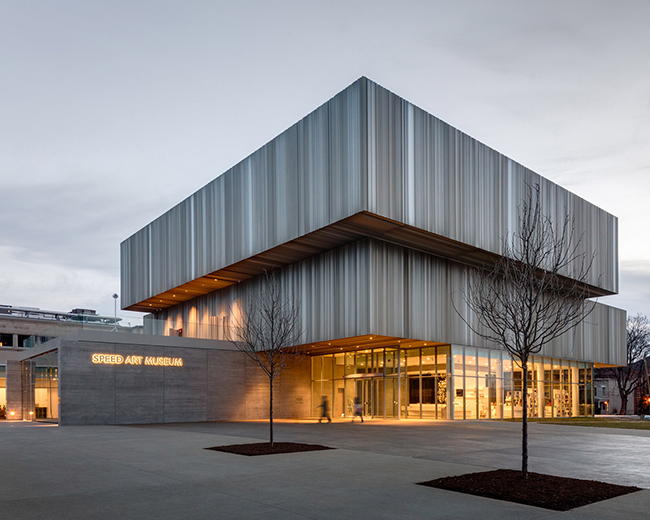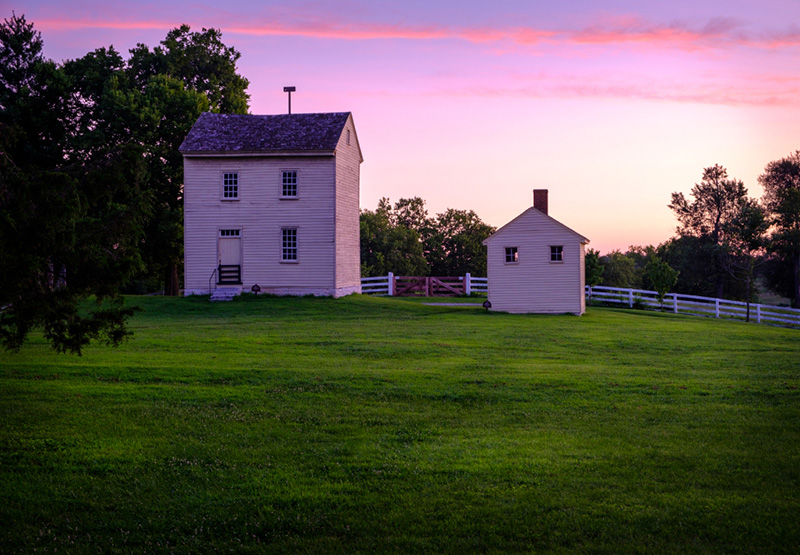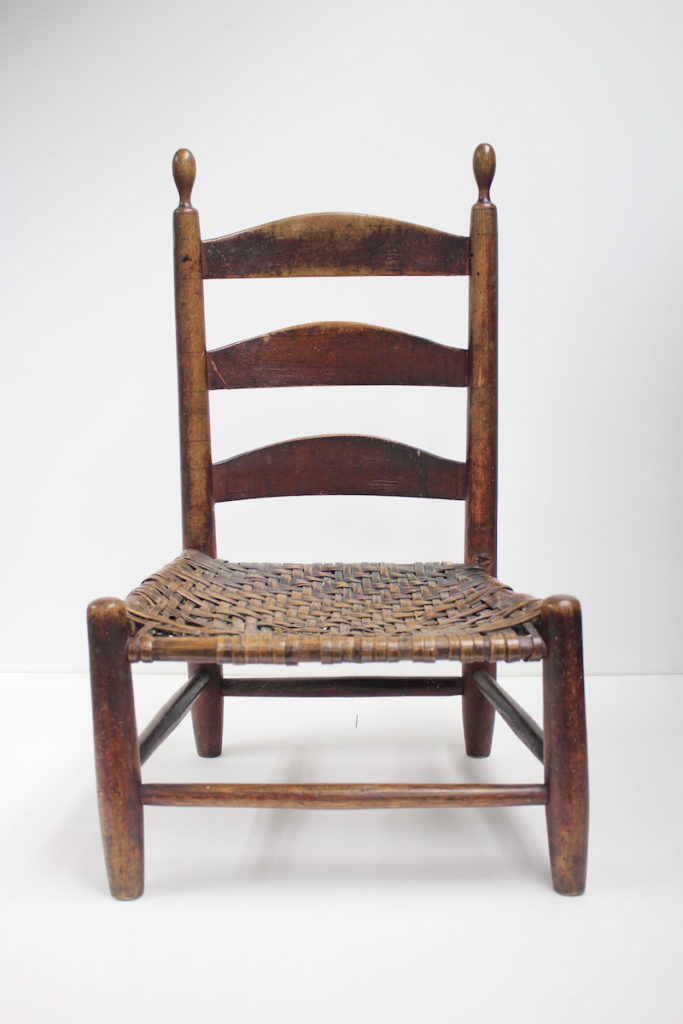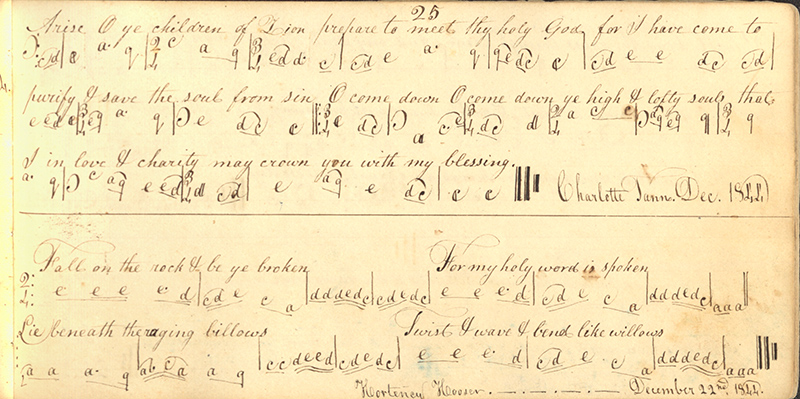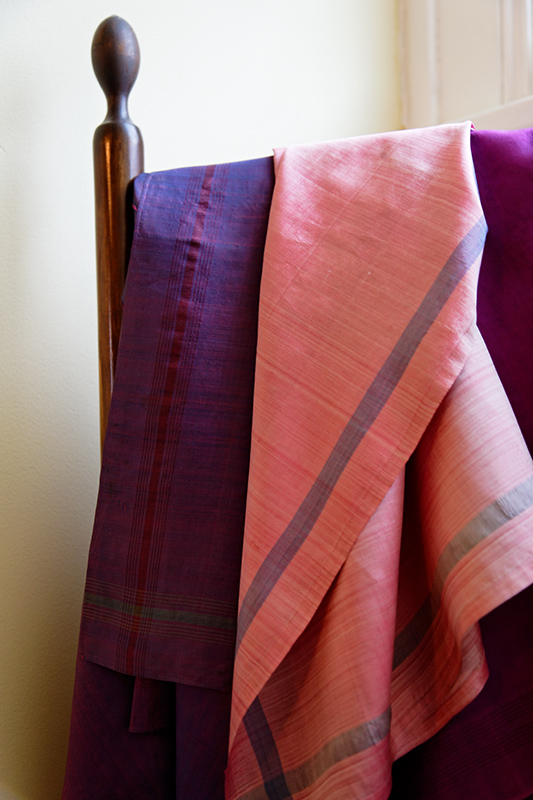Celebrating Kentucky Shaker Commonwealth at the Speed Art Museum
by Taryn Clary
Equipped with a Master’s Degree from the Winterthur Program in American Material Culture, Scott Erbes joined the Speed Art Museum in 1999 as the museum’s first ever curator of decorative arts and design. In 2012 he became interim director and subsequently chief curator, guiding the Speed through a massive renovation and expansion into the building we know today. While overseeing its encyclopedic collection, Erbes has never lost sight of the museum’s locality. Through exhibitions, acquisitions, and the creation of a Kentucky gallery in 2016, he has developed the institution’s collections of state art and status as a community resource.
In 2020, his Kentucky-oriented focus resulted in the exhibition Careful, Neat & Decent: Arts of the Kentucky Shakers (August 21, 2020–April 4, 2021), part of a larger celebration of Shaker art and culture across Kentucky. The show brings together roughly 50 objects from the local South Union Shaker Village and Shaker Village of Pleasant Hill, demonstrating the remarkable range of Shaker production in the 19th century and expanding a typically narrow understanding of Shaker culture. The exhibit opened in the midst of the COVID-19 pandemic, but Erbes found new ways to make it both more accessible and more resonant to people at home.
Decorative Arts Trust: You developed this exhibition in collaboration with the South Union Shaker Village and Shaker Village of Pleasant Hill. How does the experience of working with local history and community organizations compare to other decorative arts exhibitions in your tenure at the Speed?
Scott Erbes: Over the years, I’ve intentionally structured many of my Kentucky-related exhibitions and gallery installations as collaborative ventures. This state is blessed with great museum colleagues and private collectors who generously and enthusiastically share objects as well as their expertise. We all want to share the state’s rich material heritage with others! Moreover, the Speed’s Kentucky collection is far, far, far from being comprehensive. For example, we have only one(!) example of Kentucky Shaker furniture, so the exhibition wouldn’t exist without my colleagues at South Union and Pleasant Hill.
DAT: The exhibition brings together over 50 objects that demonstrate Shaker production including furniture, textiles, hymnals, and even food. How did you define this scope of material culture and create a sense of coherence?
SE: I’ve been frustrated over the years by many Shaker exhibitions and installations mounted by art museums. They often focused on very narrow slices of Shaker material life like, say, furniture or baskets. I wanted to create an exhibition that reflected the wide range of creative endeavors undertaken by the Kentucky Shakers, particularly the absolutely amazing output of Shaker Sisters (for example, the Sisters at Pleasant Hill made over 60,000 pounds of fruit preserves in a single year, primarily for sale outside the community). I think the exhibition holds together precisely because it is about material diversity—it is clear from the start that it presents a broad swath of Shaker output in which the various objects help contextualize each other.
DAT: Do you have a favorite object in the show?
SE: Well, with curators, the answer to the favorite object question often depends on the day you ask! I will be bad and give you two favorites. First, the gorgeous silk neckerchiefs created at both South Union and Pleasant Hill. The colors—bold shades of purple, pinks, etc.—belie popular notions of Shaker simplicity. And the backstory of devoted Shaker Sisters coaxing along the silk worms is wonderful; I would not be so brave around thousands of the little buggers. My other favorites are the handwritten Shaker hymnals. The stunning number of Shaker songs of faith, the role of Kentucky’s Black Believers in writing many of them, and the distinctive letteral notation system used by the Shakers make for a unique period in American music history. Also, I come from a family of musicians and grew up hearing my mother play on the piano the Methodist hymns of Charles Wesley, so I have a soft spot for hymnody!
DAT: Were there any particularly surprising discoveries in your research leading up to the exhibition?
SE: Full disclosure, prior to this exhibition, my knowledge of the Kentucky Shakers was superficial (i.e. furniture only), so much was surprising to me. I was most captivated by the daily records kept by the communities and by individual Believers. There on the pages were stories of sacrifice, success, joy, and despair. During months of COVID work-at-home, I looked forward to each day that I could escape to the Shaker world and be inspired by their perseverance and generosity towards others.
DAT: The exhibition shares the biographies of individual members of the Kentucky Shaker community in addition to exploring how Shaker experiences differed for women, African Americans, and orphans. How important was it to you to highlight these identities behind the arts?
SE: It is so very, very rare to have very specific historical insights into the lives of so many work-a-day people—especially people of color—a fact that makes Shaker archival materials such rich and wonderful sources. Moreover, the words on the pages link specific individuals to specific objects—also very rare in this business. I was especially inspired by accounts of Black Believers, most of whom did not choose to enter the communities but arrived with their enslavers who were converts. They lived in a liminal space, having autonomy within the community yet not legally emancipated, so their freedom existed only within community boundaries. Once emancipated, many understandably left to pursue their lives. Some remained Believers and devoted their lives to the Shaker enterprise, becoming community leaders as artisans, group leaders, authors of songs of faith, and many other roles.
DAT: The exhibition is presented alongside Mariam Ghani + Erin Ellen Kelly: When the Spirits Moved Them, They Moved, a site-responsive video and photography installation. How did you go about relating the historic material in the exhibition to the contemporary sound and movement of Ghani and Kelly?
SE: The integration between the two exhibitions is seamless, with Mariam Ghani and Erin Ellen Kelly’s video installation echoing many of the themes in my exhibition, mostly notably the roles of music, music performance, and movement as cornerstones of Shaker religious expression.
DAT: The exhibition opened in the midst of the COVID-19 pandemic. How did you and the Speed Art Museum team approach making exhibition content accessible to people at home?
SE: As soon as COVID hit and we began to work from home, I began thinking about ways to share the exhibition even before it opened. As I was reading through Shaker manuscripts, I realized that so many of the themes embedded within them were inspiring to me, so hopefully they would be to others. With that in mind, I produced several short videos on the Kentucky Shakers, emphasizing themes like resilience, finding joy in everyday experiences, and caring compassion for others. Once the exhibition was installed, we made all of its interpretive content accessible via text so our guests could read the materials in our socially distanced world and also made the materials accessible to all via our website.
DAT: What do you hope visitors both virtual and physical will take away from the show?
SE: Frankly, that the Kentucky Shakers were about more than just “Shaker simplicity,” which has been a marketing tool to sell Shaker antiques as well as Shaker “inspired” objects since the early decades of the 20th century. Also that the Shaker experience in Kentucky, the southernmost home to the early Shaker communities, was distinctive from that of other communities. The Kentucky Shakers were remote from Shaker administration in the East and really had to find their own way in remote, rural circumstances. And all of this in a state that legally promoted and protected slavery, which was anathema to Shaker beliefs. This led to Believers from both Kentucky communities and the communities themselves being attacked by their neighbors.
If you find yourself in the local Louisville area, visit the exhibition before it closes April 4, or take the website virtual tour or YouTube virtual tour from home! Participants in the Trust’s Kentucky symposium, now scheduled for April 6-10, 2022, will have the opportunity to visit the Speed Museum as well as the Shaker Village at Pleasant Hill.
Read more about antiques and the decorative arts field by browsing the Decorative Arts Trust blog, by signing up for the e-newsletter, and by following the Trust on Facebook and Instagram. The Decorative Arts Trust appreciates the support of members and donors to share stories like this one with interested readers.
About The Decorative Arts Trust Bulletin
Formerly known as the "blog,” the Bulletin features new research and scholarship, travelogues, book reviews, and museum and gallery exhibitions. The Bulletin complements The Magazine of the Decorative Arts Trust, our biannual members publication.









